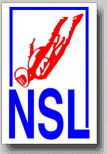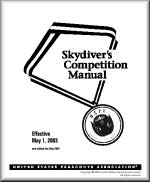
National
Skydiving
League
226 Pecan Street
Deland FL 32724
tel: (386) 801-0804
© 2003 - 2025
All Rights Reserved


226 Pecan Street
Deland FL 32724
tel: (386) 801-0804
© 2003 - 2025
All Rights Reserved


Deanne Hesterberg was the MESL event judge. She is a current USPA national judge for Formation Skydiving competition and naturally very familiar with the USPA Competition Manual. The latest 2005 version of the manual can be downloaded from the USPA website where it has been available for a few weeks. The link on the front page - "USPA Skydiver’s Competition Manual Revised (05/09/05)" - leads to the revised 2005 version:
| "The 2005 Skydiver's Competition Manual is complete and available for download (click here). This latest edition contains the rules that will be used to conduct the USPA National Skydiving Championships this fall at Perris Valley Skydiving, near Los Angeles." |

Both teams had already attended the FSL Shamrock Showdown in March 2005 where the new rules of the International Parachuting Commission (IPC) for 2005 were already applied. The NSL News reported the 2005 rule changes in detail with stories on February 3 and February 7. Fastrax and Fastrax Select were both familiar with the new rules and had already experienced them at the earlier meet in DeLand.

Hesterberg and Connell decided to apply the IPC rules, and the falsely deducted penalty points were given back to the teams. The NSL News then studied the new 2005 version of the USPA Competition Manual and compared it with the penalty section of the IPC rules. It appears as if there was a good reason for the confusion at the MESL meet.
The language of the IPC 2004 rules still included the 2-point deduction for infringements:
| IPC General Rules 2004 4.8. Scoring 4.8.1. A team will score one point for each judgeable scoring formation performed in the sequence within the allotted Working Time of each round. Teams may continue scoring by continually repeating the sequence. 4.8.2. Credit will only be given for formations, inters or total separations if the video evidence is judgeable. 4.8.3. One point will be deducted for each infringement occurring within Working Time from the total points awarded in 4.8.1 for that round with the following exceptions: |
The IPC changed the rules for international 4-way competition as reported and published the new language for scoring and penalty situations in February. The major difference was the fact that the former "punishing" paragraphs 4.8.2 and 4.8.3 were removed. There was no additional 1-point deduction for infringements any longer. The new language for 4.8.2 and 4.8.3 covered different topics ("Omission" and "Double Bust"):
| IPC General Rules 2005 4.8. Scoring 4.8.1. A team will score one point for each scoring formation performed in the sequence within the allotted Working Time of each round. Teams may continue scoring by continually repeating the sequence. 4.8.2 For each omission three points will be deducted. 4.8.3 If an infringement in the scoring formation of a block sequence is carried into the inter (ref. 2.8), this will be considered as one infringement only, provided that the intent of the inter requirements for the next formation is clearly presented and no other infringement occurs in the inter. 4.8.4 The minimum score for any round is zero points. |
USPA updated the Competition Manual for 2005 at the BOD winter meeting, which took place before the IPC meeting in 2005. However, the Competition Committee was prepared to accommodate the possibly upcoming rule changes, which were supposed to become a part of the USPA rules for the 2005 season. The USPA Competition Manual was published on May 9, 2005.
It happened that USPA's paragraph 5-1.9 of the 2005 rules, which covers the scoring and penalty situations, continued to be almost identical with IPC's language for 2004. The IPC changes for penalty situations did not make it into the USPA rules for 2005:
| USPA 2004 5-1.9: SCORING A. 4-, 8-, and 16-Way: 1. A team will score one point for each judgeable scoring formation performed in the sequence within the allotted working time of each round. Teams may continue scoring by continually repeating the sequence. 2. Credit will be given for formations, inters or total separations if the video image is judgeable. 3. For each infringement occurring within working time, one point will be deducted from the total points awarded for that round, with the following exceptions: |
The critical language of A.3, which includes the additional 1-point deduction, is still a part of the USPA rules for the 2005 season, while the IPC removed the language for "credit" and for the same 1-point deduction (USPA's A.2. and A.3.) completely from the rule book:
| USPA 2005 5-1.9: SCORING A. 4-, 8-, and 16-Way 1. A team will score one point for each judgeable scoring formation performed in the sequence within the allotted working time of each round. Teams may continue scoring by continually repeating the sequence. 2. Credit will be given for formations, inters or total separations if the video image is judgeable. 3. For each infringement occurring within working time, one point will be deducted from the total points awarded for that round, with the following exceptions: |

The NSL News contacted Marylou Laughlin, Chair of USPA's Competition Committee, and updated her on last weekend's MESL event at Skydive Greene County. Laughlin was not aware of any intentional difference of the penalty rules. She will study the USPA minutes leading up to the current version of the Competition Manual and clarify the situation for the 4-way teams and competitors in the U.S.A. The NSL News will follow up and publish new information as soon as it becomes available.